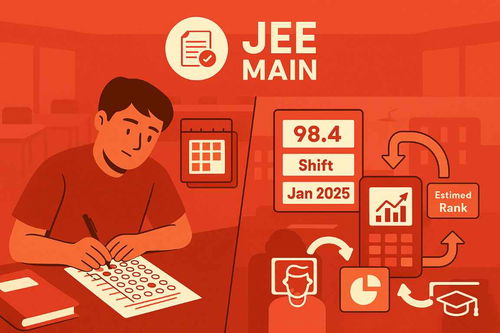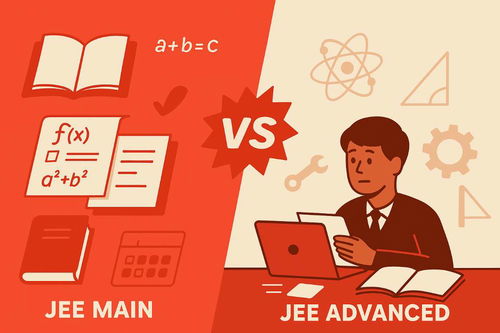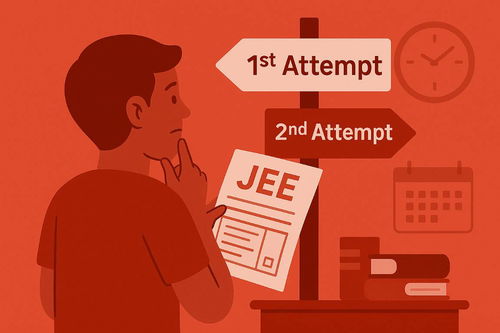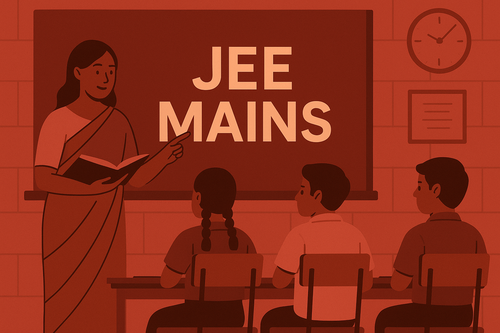Professional Courses
Industry-relevant training in Business, Technology, and Design
Categories
Interactive Games
Fun games to boost memory, math, typing, and English skills
Typing
Memory
Math
English Adventures
Knowledge
How the JEE Main Marking Scheme Works

Every JEE Main aspirant eventually asks the same question: How exactly is my score calculated?
Understanding the marking scheme is just as important as studying the syllabus. Knowing how the marks work will help you:
- Avoid losing marks to silly mistakes
- Prioritise questions wisely
- Estimate your rank after the exam
- Build a more effective test strategy
In this guide, we will break down the entire JEE Main marking scheme. You’ll learn:
- Total marks and question pattern
- Subject-wise breakdown
- Negative marking rules
- How percentile and NTA scores are calculated
- Tips to avoid common marking pitfalls
Let’s dive into how JEE Main really works behind the scenes.
Overview of JEE Main Paper Structure
The JEE Main exam is divided into multiple papers, but Paper 1 is the most common for admission to B.E./B.Tech programs.
This paper includes three subjects:
- Physics
- Chemistry
- Mathematics
The exam is conducted in computer-based format*, and contains a mix of MCQs (Multiple Choice Questions) and Numerical Value Questions (NVQs)**.
Total Marks and Duration
- Total Marks: 300
- Questions: 90 (out of which 75 need to be answered)
- Duration: 3 hours
Each subject has:
- 20 MCQs (attempt all)
- 10 Numerical Value Questions (attempt any 5)
- That’s 30 questions per subject
So you answer 25 questions in each subject (20 MCQs + 5 NVQs) — totalling 75 questions overall.
Marking Scheme for MCQs
MCQs follow a simple and strict rule:
- Correct Answer: +4 marks
- Incorrect Answer: -1 mark
- Unattempted: 0 marks
This negative marking makes guessing risky. One wrong answer can cancel out four right ones if you aren't careful.
Let’s say you attempt 10 MCQs in Physics:
- 7 are correct → 7 × 4 = 28 marks
- 3 are wrong → 3 × (-1) = -3 marks
- Net score for MCQs = 28 - 3 = 25 marks
The same rule applies to Chemistry and Mathematics.
Marking Scheme for Numerical Value Questions
Numerical value questions (NVQs) are different. These require you to enter a numeric answer using the keyboard.
Here’s the marking rule:
- Correct Answer: +4 marks
- Incorrect or Unattempted: 0 marks
- No Negative Marking
This gives you more freedom to try without fear of losing marks. If you’re not sure but can estimate a close value, it’s better to attempt.
That’s why many students prefer NVQs for safe scoring.
Example:
You attempt 5 NVQs in Chemistry:
- 3 correct → 3 × 4 = 12 marks
- 2 wrong → 0 marks
- Total = 12 marks
Total risk = zero. That’s why it's important not to leave NVQs blank unless you're completely unsure.
Subject-Wise Marking Breakdown
Let’s break it down subject by subject.
Mathematics:
- 20 MCQs × 4 = 80 marks
- 5 NVQs × 4 = 20 marks
- Total: 100 marks
Physics:
- 20 MCQs × 4 = 80 marks
- 5 NVQs × 4 = 20 marks
- Total: 100 marks
Chemistry:
- 20 MCQs × 4 = 80 marks
- 5 NVQs × 4 = 20 marks
- Total: 100 marks
Add them all: 300 marks total
Total Questions vs Attempted Questions
You’ll see 30 questions per subject, but only 25 need to be attempted.
For NVQs, you get 10 options and choose any 5. If you try more than 5, only the first 5 responses are recorded.
This means:
- Attempt MCQs carefully because they have negative marking
- For NVQs, feel free to try up to 5 without fear
- Do not try more than 5 NVQs per subject, as the rest won’t count
What Is the Percentile Score?
JEE Main does not show your raw score directly in the result. Instead, they display a percentile score (NTA score).
This percentile is not the percentage of marks you got. It tells you how many students scored less than or equal to you in that session.
For example:
- You score better than 95% of students
- Your percentile = 95.0000000
It’s calculated per session, and then the best percentile score of the two sessions (January or April) is used for ranking.
Does the Percentile Affect Actual Marks?
Yes and no.
Percentile does not show your exact marks, but NTA uses it to:
- Normalise differences across shifts
- Create a common merit list
- Filter for JEE Advanced eligibility
- Allocate seats in JoSAA counselling
So while your score determines your percentile, it’s the percentile that affects your rank.
Normalisation of Scores
Since JEE Main is conducted in multiple shifts, some papers might be slightly tougher than others.
To fix this, NTA uses a normalisation method.
Your raw marks are converted into a percentile, and then these normalised scores are used for:
- Creating All India Ranks
- Declaring cut-offs
- Seat allocation
This ensures fairness regardless of which day or shift you appear in.
How Is Your Final Score Used?
Once you’ve given both sessions (Jan and April), NTA picks your best percentile for final ranking.
Then your All India Rank is published, based on:
- Best percentile among the two attempts
- Tiebreaker rules (Maths > Physics > Chemistry > Age)
This AIR is used for:
- Admissions to NITs, IIITs, GFTIs
- Eligibility for JEE Advanced
- Counselling through JoSAA or state quotas
Tips to Maximise Marks with the Marking Scheme
Understand Negative Marking Well
- Don’t randomly guess in MCQs
- Eliminate two options before attempting
- If unsure, skip and come back later
- Never rush the first few questions
Focus More on NVQs
- No negative marking
- Even a close estimate can score full marks
- Attempt all 5 per subject
- Practice estimation techniques and formulas
Attempt Strategy
- Prioritise easy MCQs to gain confidence
- Move to NVQs next
- Come back to unsure MCQs after finishing others
- Leave tough guesses if time is short
Mock Test Application
- Mark your score during practice tests using the same rules
- Track mistakes, especially in negative-marking questions
- Identify which subject affects your marks through wrong attempts
Common Mistakes to Avoid
- Trying more than 5 NVQs per subject
- Leaving NVQs blank
- Guessing MCQs without elimination
- Mismanaging time and rushing in the last 30 minutes
- Ignoring question instructions and marking all options
Quick Recap of Marking Rules
- MCQ correct: +4
- MCQ incorrect: -1
- NVQ correct: +4
- NVQ incorrect or unattempted: 0
- Attempt 25 questions per subject
- Total marks: 300
- No partial marking
- Percentile used for ranking, not raw score
Final Thoughts
The JEE Main marking scheme is built to reward accuracy, smart attempts, and balanced strategy.
Once you understand the logic behind scoring, you can:
- Avoid negative marking traps
- Make safe and smart guesses
- Use NVQs to boost scores
- Estimate your performance after the paper
- Approach each question with confidence
Remember, marks are not just about right answers. They’re also about avoiding wrong ones. Keep that in mind and practice your mock tests with the same marking system.
By mastering the marking scheme, you gain an edge before you even start answering the questions.
You’ve got the strategy now. The rest is all execution.

Learn how negative marking works in JEE Main 2025 and how to avoid it with practical, proven strategies.

Learn how to prepare for JEE Main 2025 with a proven, winning strategy. Get a detailed plan, subject-wise tips, and...

Learn the chapter-wise weightage for JEE Main 2025 across Physics, Chemistry, and Maths. Prioritise smartly and...

Discover the most important chapters for JEE Main 2025 across Physics, Chemistry, and Maths. Focus your prep smartly...

Discover top JEE Main books for Physics, Chemistry & Maths. Learn how NCERT & reference books pair with AllRounder.

Looking for free JEE Main mock tests to boost your preparation? Discover the best platforms, tips, and strategies to...

Discover what scores and percentiles are needed to secure seats in top NITs, IIITs, and GFTIs. Learn how category...

Understand the exact difference between JEE Main percentile and rank. Learn how scores are normalized across...

Understand the JEE Main scoring system to maximize your result. Learn the marking scheme, how to handle negative...

Confused about the JEE Main attempt limit? This guide clarifies how many times you can appear, the eligibility...

Wondering how many times you can appear for JEE Mains? This guide explains the total attempts allowed, session...

Discover the key differences between JEE Main and JEE Advanced in terms of syllabus, pattern, difficulty, and prep...

Confused about JEE Main qualification rules? This blog gives you a detailed checklist of eligibility criteria,...

Explore this simple, step‑by‑step guide to the JEE Main counselling process. Learn how to register, fill choices,...

Curious about how many times SC students can attempt JEE Main? This complete guide covers JEE Mains attempt rules,...

Want to score 200+ in JEE Main? This practical guide gives you proven tips, subject-wise strategies, mock test...

Wondering how the JEE Main exam is structured? This complete guide breaks down the official JEE Main exam pattern...

Learn how to crack JEE Main on your first attempt with proven strategies. This guide covers planning, conceptual...

Learn how many JEE Main attempts you can take after Class 12. This guide covers eligibility, attempt limits, subject...

Learn about the JEE Main age limit requirement and key eligibility rules. Understand the attempt policy, Class 12...

Discover the most important topics for the JEE Main exam in Physics, Chemistry, and Mathematics. Learn subject-wise...

Get a subject-wise preparation strategy for JEE Main step-by-step using smart tips and trusted resources from AllRounder.ai.

Looking to score high in JEE Main 2026? Discover expert preparation tips on creating smart study plans, mastering...

Confused about JEE Mains eligibility? This detailed guide explains JEE Mains eligibility criteria including...

Confused about JEE Main Attempts for ST Category? This detailed guide covers attempt limits, age relaxations,...

Wondering how many times OBC candidates can appear for JEE Mains? This detailed guide explains JEE Main Attempts for...

Dropping a year for JEE Mains? This in-depth strategy guide helps droppers optimise their JEE Main attempts with...

Confused about how many times you can appear for JEE Main? This guide explains the number of JEE attempts, session...
Resources
-

Your complete JEE Advanced resource for eligibility, exam dates, syllabus, marks vs rank, and...
-

Understand the entire JEE Main process, from application and eligibility rules to the exam...
-

Explore the IB Board – a global curriculum emphasizing holistic, student-centered learning...
-

Learn about CBSE – India’s national school board offering a standardized curriculum, NCERT...
-

Explore everything about the ICSE board – its curriculum, subjects, exam format, and academic...
